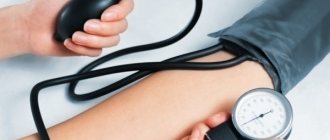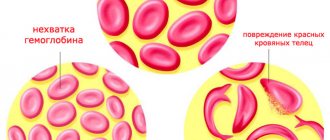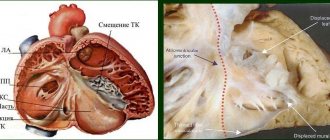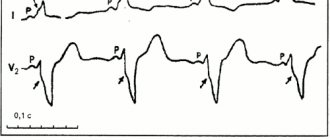Hypercholesterolemia - what is it? Translated from Greek - high cholesterol in the blood. This is a characteristic of the disease. Strictly speaking, hypercholesterolemia is not even a disease - a pathological syndrome, a symptom.
But in fact, it is the cause of many disorders in the activity of the heart and blood vessels. To assess the severity of a disease-symptom, you need to understand its origin and development characteristics. This will help prevent the occurrence of hypercholesterolemia, and if it does occur, identify it in time and determine the optimal treatment methods.
Biochemical disorders
Biological chemistry helps to understand the mechanism of changes caused by one or another pathological process. The biochemistry of hypercholesterolemia is a failure in lipid metabolism. Different types of fats enter the human body. As a result of a complex, multi-step process, they are broken down and “processed” by appropriate enzymes. Free cholesterol does not dissolve in the blood.
Light fats in the split state are “captured” by red blood cells, transforming into chylomicrons -
transport forms. With the flow of blood and lymph, they move throughout the body, carrying cholesterol. But in order to penetrate inside the organs, “transport” needs the help of lipoproteins - complexes of lipids and proteins.
It is lipoproteins that provoke the development of hypercholesterolemia. They differ in density. Low-density lipoproteins (LDL) are responsible for transporting cholesterol from the liver to organ tissues. This is mainly cholesterol that enters the body with food. When it increases, a lot of so-called “bad” cholesterol is transferred into the cells.
High-density lipoproteins (HDL) transport excess cholesterol from cells back to the liver. Hypercholesterolemia occurs when there are disturbances in the activity of lipoproteins.
Causes
Basically, the disorder is provoked by the following factors:
- Diabetes. Chronic illness. It is typically characterized by a decrease in insulin production or sensitivity to it. Hence metabolic disorders. The key method of correction is diet. Sugar levels are also controlled, and hypercholesterolemia itself is treated symptomatically.
- Insufficient production of thyroid hormones. Hypothyroidism.
- Use of certain medications. You should find out about the possibility of an increase in cholesterol levels in the leaflet for a specific drug.
- Liver pathologies. From hepatitis to cirrhosis.
- Poor nutrition. Acts as a key risk factor. But it is not considered as a main point, since a healthy body is quite capable of correcting changes on its own.
- Burdened heredity. As has already been clarified, there are genetically determined forms of the pathological process.
- Risk factors include such things as excess body weight, unhealthy diet high in animal fat, arterial hypertension, and lack of physical activity.
The reasons can also be considered in combination. Often the nature of the problem consists of a whole group of factors.
Types of hypercholesterolemia
The pathological syndrome is classified based on the reasons for its development, but its varieties do not have specific features of the course or external manifestations. There are three types of hypercholesterolemia:
- Primary – transmitted to children “inherited” from parents. It is caused by gene defects and can be:
- Homozygous (damaged genes received from father and mother);
- Heterozygous (a gene with a defect was passed on by one of the parents).
- Secondary – a consequence of the development of certain diseases, conditions of the body;
- Nutritional – occurs with excessive consumption of animal fats.
The diagnosis of “pure hypercholesterolemia” is made to a patient when the cholesterol level exceeds 5.18 mmol/l. This is already a clear harbinger of atherosclerosis.
Classification
The main method of subdividing a violation was developed in the middle of the last century. Fredrickson typing is used.
This method is based on such criteria as the type of substance that provokes hypercholesterolemia.
Accordingly, there are 6 types of disorders.
Type 1
The concentration of chylomicrons increases. These are small particles that adhere quite well to the walls of blood vessels. However, they almost never provoke the formation of plaques.
For the most part, this type of process is of hereditary origin. Therefore, full-fledged treatment consists of suppressing further dysfunction; it will not be possible to radically influence the etiology.
The drugs mainly used are statins. To remove excess fat. The incidence of the diagnosis is extremely low.
Type 2a
The concentration of low-density lipoproteins increases. In common parlance, this compound is called “bad” cholesterol. According to research, this type of disorder is also genetically determined. The hereditary factor plays a key role.
The treatment methods are approximately the same. Nicotinic acid and statin drugs are used.
Type 2b
Dangerous form. Characterized by complexity. Triglycerides, low and very low density lipoproteins increase.
Systemic corrective measures are needed. Without treatment, plaques are likely to develop. However, despite this, the violation proceeds sluggishly, slowly. There is time to develop a therapy strategy.
Type 3
Not well studied. In this case, the development of the disorder is characterized by hereditary etiology. An increase in intermediate density lipoproteins is typical.
A specific feature is the absence of any symptoms for a very long time.
Attention:
The use of statins is ineffective here. Preference is given to fibrates.
Type 4
Determined by an increase in the concentration of very low density lipoproteins. One of the main types in terms of the frequency of development of cholesterol plaques on the walls of blood vessels.
The development of atherosclerosis is rapid and poses a great danger to life. Treatment is needed. Nicotinic acid is used. To a lesser extent, statins, since their effectiveness in this case is insufficient.
Type 5
Combined, dangerous form. It simultaneously has features of several disorders: very low density lipoproteins and chylomicrons are increased.
The pathological process is of hereditary origin, like many described earlier. Therapy should begin as quickly as possible. There is not much time for recovery.
Pure hypercholesterolemia (ICD-10 code e78.0) is when the concentration of only cholesterol increases, i.e. low-density lipoprotein (type 2a) is rare. Combined forms of the disorder usually develop.
There are other ways to subdivide the disorder.
By origin:
- Primary process. Familial form of hypercholesterolemia. It is transmitted directly from parents to children. Accompanied by disorders from the beginning of life. It is quite difficult to detect them, since symptoms appear later.
- Secondary form. Much more common. Caused by other diagnoses: from diabetes to liver processes.
There are also more detailed classifications regarding origin. All of them are used by endocrinologists to accurately describe the essence of the process.
Symptoms of pathology
Hypercholesterolemia has no obvious signs and does not affect a person’s lifestyle and condition for the time being.
As the pathology progresses, its development may be indicated by:
- Orange or yellow spots on the eyelids;
- Gray stripe along the periphery of the cornea of the eyes;
- Swellings and bumps (xanthomas) on the fingers, elbows, ankles, knees;
- Manifestations of angina pectoris.
Subsequently, cholesterol deposited on the walls of the arteries forms plaques. The passages of blood vessels narrow, their elasticity is lost, and blood flow deteriorates. Cholesterol plaques cause blood clots.
Signs of hypercholesterolemia smoothly “flow” into symptoms of cardiovascular pathologies.
Diagnostics
The examination is carried out under the supervision of an endocrinologist. A number of activities are required:
- Oral survey of patients regarding complaints. It is important to identify all symptoms. The clinical picture suggests the essence of the disorder.
- Anamnesis collection. Used as a measure to identify the etiology of the disorder. Family history, previous illnesses, and current abnormalities are studied. It makes sense to evaluate your lifestyle, diet, and bad habits.
- General blood analysis. Used to identify the most severe forms of hypercholesterolemia.
- Biochemical research.
- Also a lipid profile. It is used actively as a basic measure.
- Some melons can provide a visual assessment of the tissue. The tendons of the hands and joints are palpated, the eyelids and the cornea of the eye are also examined. Manifestations of this kind do not always occur, therefore there are no guarantees of obtaining information.
As necessary, the condition of internal organs is assessed. Ultrasound, X-ray, angiography.
Therapy for hypercholesterolemia
Lowering the concentration of cholesterol in the blood can be achieved by changing lifestyle and using medications. Adjusting your usual lifestyle with hypercholesterolemia is essentially preventive measures to maintain acceptable cholesterol levels.
If they do not help, the doctor takes medication measures, prescribing:
- Omega-3 acids – reduce the risk of pathological changes in heart rhythm, increase the life expectancy of patients after a heart attack. Maintain normal cholesterol levels, prevent blood clots, making blood vessels more elastic and stronger.
- Fibrates – correct lipid metabolism in the body, activate the enzyme lipoprotein lipase, accelerating fat metabolism. Helps increase the level of “good” cholesterol, preventing the development of atherosclerosis. Can be used simultaneously with statins.
- Bile acid sequestrants - use cholesterol produced by the liver for their synthesis. They reduce the possibility of developing heart pathologies, including ischemia, and reduce the number of deaths from myocardial infarction.
- Inhibitors - absorb cholesterol from the intestines, lowering its content in the blood. They are relatively harmless and can be taken by patients suffering from serious diseases (for example, liver). Can be taken with statins.
- Statins inhibit the production of cholesterol by the liver and reduce its concentration inside cells. They promote the destruction of fats, increase the lifespan of patients, reduce the number of possible consequences of atherosclerosis and the intensity of vascular disorders. They can provoke negative changes in muscle tissue and the liver, and therefore their use requires systematic monitoring of blood tests for signs of liver damage. Not prescribed for liver diseases.
Omega-3 acids
Statins
Drug treatment
If non-drug therapy does not help lower cholesterol, then the doctor prescribes a list of medications.
Drugs are prescribed individually:
| group of medications | name of medications |
| bile sequestrant group | Colesteramine; |
| · Kolesevelam. | |
| Omega 3 drugs | · Solgar. |
| group of antiplatelet agents | · Aspirin; |
| · Thrombus Ass. | |
| fibrate group | · Clofibrate; |
| Bezafibrate; | |
| · Fenofibrate. | |
| statin group | · Atorvastatin; |
| · Lovastatin; | |
| Rosuvastatin; |
These medications reduce the activity of liver cells in producing their own cholesterol, which reduces total cholesterol and treats hypercholesterolemia.
Folk remedies
Treatment of hypercholesterolemia requires an integrated approach. Traditional medicine, affordable and safe, can help solve problems with cholesterol.
For hypercholesterolemia, a good effect is given by:
- Rose hip. Pour 20 g of dried crushed berries with a glass of boiling water. Cook for 15 minutes, filter. Drink half a glass twice a day;
- Immortelle. Pour 10 g of crushed flowers into a glass of water. Cook for 30 minutes. Drink a dessert spoon on an empty stomach three times a day. The course is a month. After taking a 10-day break, treatment can be continued;
- Three-leaf watch. Sprinkle the crushed leaves onto cooked food as a seasoning; Milk thistle. Grind the seeds into flour. Take a teaspoon with meals;
- Garlic. Pour 350 g of chopped garlic with a glass of alcohol. Place in a dark place for a day and filter. Drink 2-3 times a day: 20 drops per glass of milk;
- Grapefruit. After peeling, finely chop, add grated carrots, two teaspoons of honey, two chopped walnuts and half a glass of kefir (low-fat). Stir well and drink once a day.
Diet for hypercholesterolemia
In the initial stages of hypercholesterolemia, it is enough to exclude foods with “bad” cholesterol from the diet. This measure will help keep its indicator within acceptable standards.
General guidelines regarding diet for hypercholesterolemia can be summarized in a few simple rules:
- Reduce the amount of calories consumed, especially with a sedentary lifestyle;
- Don’t overeat at night, control your body weight;
- Reduce the amount of animal fat consumed by replacing it with vegetable oils;
- Include foods containing vitamins and microelements in your diet;
- Do not give up eating lean meats;
- Limit salt intake;
- When choosing a dietary table, remember about food preferences and do not elevate prevention to the rank of punishment.
The table provides an approximate list of foods recommended and contraindicated in the diet for hypercholesterolemia.
With hypercholesterolemia, all dishes are steamed, boiled or baked.
Prevention
Preventive measures logically continue the recommendations for therapeutic nutrition and maintaining a healthy lifestyle:
- Elimination of harmful factors from life - smoking (as well as passive smoking) and drinking alcohol;
- Physical education that strengthens the cardiovascular system;
- Saturation of the body with sufficient amounts of vitamins, minerals and antioxidants;
- Formation of a diet that includes healthy foods.
Regular monitoring of blood composition and health using tests, avoiding harmful substances, a balanced diet and maintaining physical fitness will help protect blood vessels from cholesterol deposits and take timely measures to cleanse them.
Sample menu for one day
The diet for hypercholesterolemia is varied and simple. Creating a menu should not cause any particular difficulties. The patient cannot do without meat, let him eat with pleasure. The main thing is that it is not greasy and fried.
A one-day meal for him may, for example, contain:
- Breakfast: oatmeal with raisins, green tea;
- Second breakfast: grapefruit;
- Lunch: vegetable soup, boiled rice with a piece of lean boiled veal, apple juice;
- Afternoon snack: rosehip decoction, fresh fruit;
- Dinner: cottage cheese casserole, herbal tea;
- At night you can drink a glass of kefir. The total amount of bread per day should not exceed 120 g.










